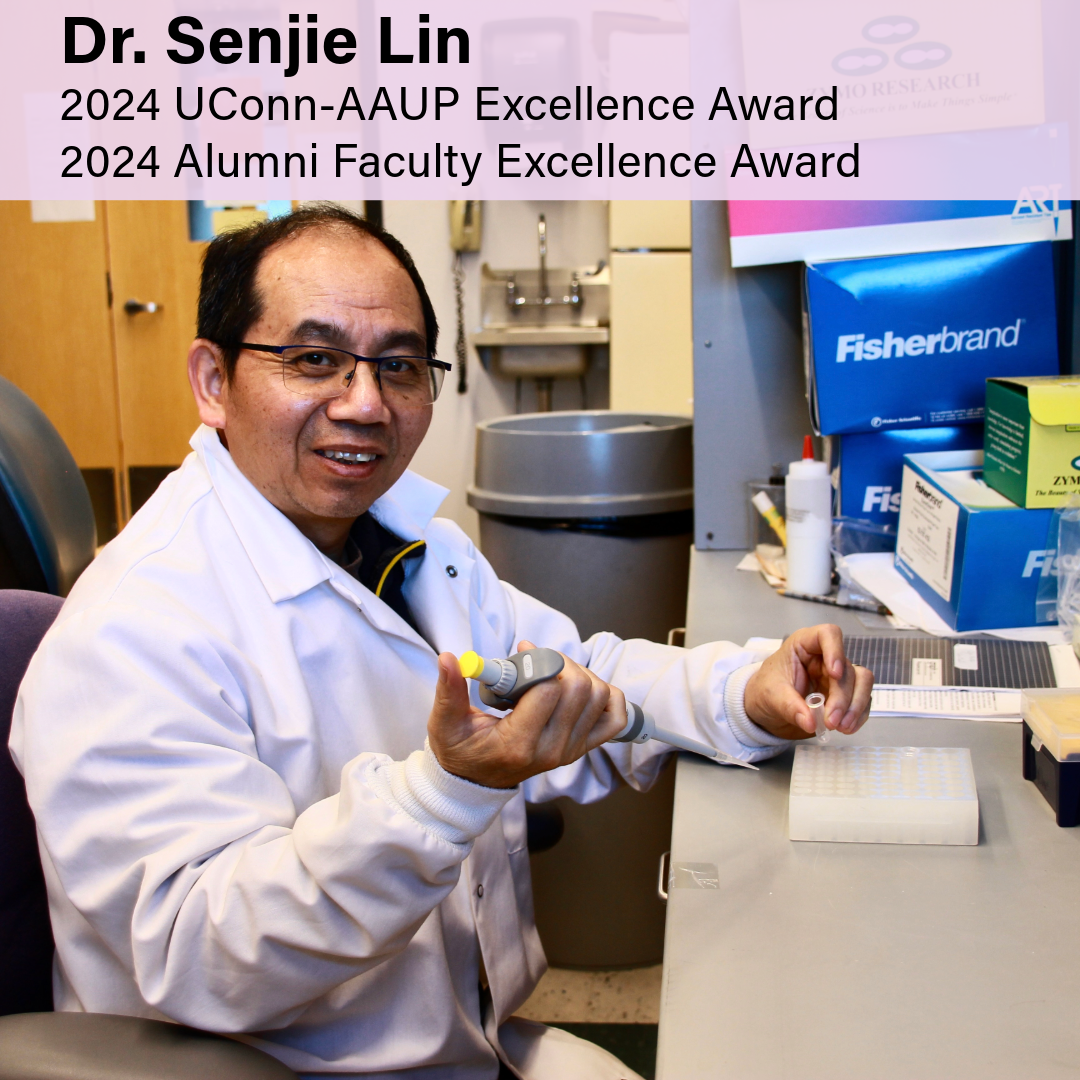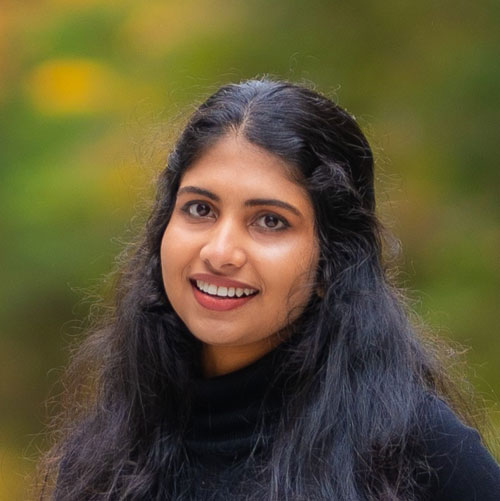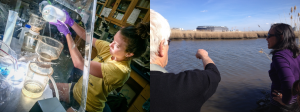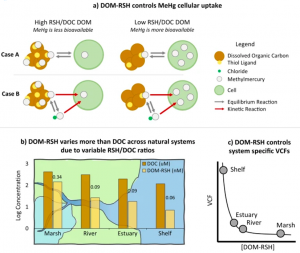Awards:
Professor Samantha Siedlecki
Prof. Siedlecki was named as a 2024 – 2025 Fullbright Scholar for research in both Italy and South Africa, which has been featured at UConn Today
Professor Hans Dam
Professor Dam had the honor of giving the Maxilliped Lecture on “Copepods as Model Systems for the Study of the Response of the Biota to Global Change” during the 15th International Conference on Copepoda held in Hiroshima, Japan.
Research Faculty Sandra Shumway
Dr. Shumway was awarded the Distinguished Lifetime Achievement Award by the US Aquaculture Society and is the first female to receive the award. She was also appointed Fellow of the Marine Biological Association, FMBA. MBA Fellows are senior practitioners in marine biology who have contributed to the discipline at the highest level. The title of Fellow of the Marine Biological Association, FMBA, was first awarded in 2014, following granting of a Royal Charter to the Marine Biological Association. There are currently 50 MBA Fellows.
Professor Senjie Lin
Professor Lin has been awarded the 2024 UConn-AAUP Excellence Award in as well as the 2024 Alumni Faculty Excellence Award in Research and Creativity.
Research Scientist Susan A. Smith (Mystic Aquarium):
Sue won first place in Animal Welfare Research for her presentation at the annual Association of Zoos and Aquariums conference in Calgary. Her work involved the use of non-invasive fecal samples to elucidate the microbiome and hormone profile of the African Penguin, along with the development of a genetic sexing test, which will soon be used to aid in the monitoring of endangered wild populations in South Africa.
PhD student Paxton Tomko
Paxton was awarded a National Science Foundation Graduate Research Fellowship (NSF-GRFP) for research with Professor Pieter Visscher, which was featured at UConn Today
PhD Candidate Halle Berger
Halle was awarded the 2024 National Marine Fisheries-Sea Grant Fellowship by NOAA making her the first UConn student to ever receive the award.
Grants:
Professor Senjie Lin
Prof Lin will collaborate with the University of Columbia and Yale University on a DARPA-funded multi-year (2024-2027) project that aims to utilize algal genomics to develop biosensors for various environmental stimuli
MEBES: Modular engineered biosensors for environmental sensing
Research Professor Paola Batta-Lona, Professor Hannes Baumann
Led by UConn EEB professor Eric Schultz, co-PIs Batta-Lona and Baumann will collect and analyze novel data on short- and long-term changes in the trophic ecology of species of greatest conservation need.
Bottoming Out? Testing Hypotheses on Why Long Island Sound Flatfishes Are Disappearing (Long Island Sound Study, $316,667).
Professor Heidi Dierssen and Research Professor Paola Batta-Lona
In collaboration with colleagues from URI, Dierssen and Batta-Lona will use eDNA to characterize biological communities in shallow seafloor, deep-sea seafloor, and offshore midwater acoustic soundscapes. Additionally remote sensing data and Distributed Sensing enabled Cabled Observatories (DiSCO’s) will be used for broader scale understanding of major ocean processes in these areas.
Coastal and Offshore Biogeochemical Oceanographic Observatories Enabled with Distributed Sensing (NIUVT, $2,126,000)
Research Scientist Zhuomin Chen
Projecting future changes in the Gulf Stream warm-core rings and their impacts on the Northeast U.S. Large Marine Ecosystem in a changing climate using regional MOM6 simulations (NOAA $570,000)
Research Scientist Tracy Romano (Mystic Aquarium) and Associate Professor in Residence Michael Finiguerra:
Drs Romano and Finiguerra were awarded an NSF grant to continue leading the Research Experience for Undergraduates (REU) program through an ongoing collaboration with Mystic Aquarium and the University of Connecticut Avery Point campus.
Romano, T.A., Finiguerra, M. REU Site Mystic Aquarium: Collaborative Research: Plankton to Whales: Consequences of Global Change within Marine Ecosystems. National Science Foundation. $464,997.
Research Scientists Ebru Unal and Tracy Romano (Mystic Aquarium):
Drs Unal and Romano were awarded a North Pacific Research Board grant to further study the transcriptome of the beluga whale for the monitoring of wild populations, in an effort to isolate the health-related expression discrepancies between healthy and endangered populations.
Romano, T.A., Unal, E. The Beluga Skin Transcriptome as a Novel Tool for Monitoring Alaska’s Beluga Stocks. North Pacific Research Board. $244,601
Dr. Romano also received funding by the North Pacific Research Board to design and run a cultural exchange that allowed young Native Alaskans to visit Connecticut, where they met with local CT Native American youth, and together took part in educational and cultural workshops.
Romano, T.A., A Science Based Educational and Cultural Exchange Workshop at Mystic Aquarium for Alaska Native and Native American Youth. $20,000
Publications:
Prof. Hans Dam
Prof. Dam co-authored a study about the negative effects of marine heatwaves on copepods. The authors found that acclimation (“getting used to”) and parental effects (“the fate of the children depends on the experience of the parents”) mitigate the negative effects of heat waves on the fitness of two important copepod species.
Sasaki, M.C, M. Finiguerra, H.G. Dam. 2024. Seasonally variable thermal performance curves prevent adverse effects of heatwaves. Journal of Animal Ecology 2024;00:1–11. DOI: 10.1111/1365-2656.14221
Graduate student Samantha Rush and Professor Penny Vlahos
This study reports on how sea ice in the Arctic Ocean incorporates and stores boron as it forms, reducing the amount of boron from under ice waters.
Rush, S., Vlahos, P., Lee, C.-H., Lee, K., Barrett, L. J. Boron to salinity ratios in the Fram Strait entering the Central Arctic: The role of sea ice formation and future predictions. Marine Chemistry. 267:104463. https://doi.org/10.1016/j.marchem.2024.104463
DMS alumnus Max Zavell and Professor Hannes Baumann
Zavell and Baumann show that the embryos and larvae of an abundant grouper species in Long Island Sound are unaffected by even very high CO2 levels in the water.
Zavell, M.D. and Baumann, H. (2024) Resiliency of Black Sea Bass, Centropristis striata, early life stages to future high CO2 conditions. Environmental Biology of Fishes 107:677–691
Research Prof. Paola Batta-Lona and Prof. Ann Bucklin
This morphological and molecular analysis revealed the diet differences of 7 mesopelagic fish species, showing the importance of gelatinous prey.
Bucklin, A., Batta-Lona, P.G., Questel, J., McMonagle, H., Wojcicki, M., Llopiz, J.K., Glancy, S., Caiger, P.E., Francolini, R., Govindarajan, A., Thorrold, S.R., Jech, M., Wiebe, P.H. (2024). Metabarcoding and morphological analysis of diets of mesopelagic fishes in the NW Atlantic Slope water. Front Mar Sci. 11:1411996. https://doi.org/10.3389/fmars.2024.1411996
Batta-Lona also published a study on the diet diversity of three salp species, which showed a wide variety of prey, broadening our understanding of trophic pathways in the mesopelagic food web.
Batta-Lona, P.G., Gardner, K., Questel, J.M., Thorrold, S.R., Llopiz, J.L., Wiebe, P.H., Bucklin, A. (2024). Salps in the NW Atlantic Slope Water: metabarcoding and compound-specific stable isotope analysis of diet diversity and trophic interactions. Mar Biol 171, 233. https://doi.org/10.1007/s00227-024-04535-x
Batta-Lona further published a study that identified parrot fish larvae via morphology and DNA sequences.
Morales‐Pulido, J. M., Galindo‐Sánchez, C. E., Jiménez‐Rosenberg, S. P. A., Batta‐Lona, P. G., Herzka, S. Z., Arteaga, M. C. (2024). A molecular approach to identify parrotfish (Sparisoma) species during early ontogeny. Journal of Fish Biology 1-10 https://doi.org/10.1111/jfb.15921
Batta-Lona was also involved in the MetaZooGene Atlas and Database (MZGdb) provides DNA sequences for multiple genes, with unique capacity for searches by ocean region.
O'Brien, T., Blanco-Bercial, L., Questel, J.M., Batta-Lona, P.G., Bucklin, A. (2024). MetaZooGene Atlas and Database: Reference Sequences for Marine Ecosystems. Methods in molecular biology 2744: 475-489. https://doi.org/10.1007/978-1-0716-3581-0_28
Prof. Peter Auster
Prof. Auster used diver surveys of reef fish off Florida to map predation risk to coral eating fishes.
Auster, P.J. and M.E. Cullerton. 2024. Can variation in fish predator density and the Landscape of Fear facilitate coral restoration success? Reef Encounter 39:48-50.
In another study, Prof. Auster and colleagues argue that the term "destructive fishing" is used in international agreements and guidance without agreement on what this term means.
McCarthy, A.H., D. Steadman, H. Richardson, J. Murphy, S. Benbow, J.I. Brian, H. Brooks, G. Costa-Domingo, C. Hazin, C. McOwen, J. Walker, D. Willer, M. Abdi, P.J. Auster, ..., N. Mukherjee. 2024. Destructive fishing: An expert‐driven definition and exploration of this quasi‐concept. Conservation Letters, e13015. https://doi.org/10.1111/conl.13015
Post-doctoral researcher Danielle Freeman
Dr. Freeman published an article together with colleagues at WHOI that forecasts the effects of sunlight-driven chemistry during oil spills.
Freeman, D. H.; Nelson, R. K.; Pate, K.; Reddy, C. M.; Ward, C. P. (2024) Forecasting Photo-Dissolution for Future Oil Spills at Sea: Effects of Oil Properties and Composition. Environ Sci Technol. 58: 15236-15245 https://doi.org/10.1021/acs.est.4c05169
Research Scientist Ebru Unal (Mystic Aquarium):
Dr. Unal showed that skin samples can reveal relevant differences between endangered and stable beluga whale populations.
Unal, E., V. Singh, R. Suydam, C.E. Goertz, and T.A. Romano. (2024). Comparative skin transcriptome analysis as a potential tool to investigate intra- and inter-population differences in belugas. Frontiers in Marine Science: Marine Conservation and Sustainability. 11:1282210
Research Scientist Tracy A. Romano (Mystic Aquarium):
Aerial photogrammetry and lipid analyses can be used to describe the body condition of wild endangered St. Lawrence Estuary beluga whales.
Sherill, M., A. Bernier-Graveline, J. Ewald, Z. Pang, M. Moisan, M. Marzeliere, M. Muzzy, T.A. Romano, R. Michaud, and J. Verreault. (2024). Scaled mass index derived from aerial photogrammetry associated with predicted metabolic pathway disruptions in free ranging St. Lawrence Estuary belugas Frontiers in Marine Science. 11:1360374.
Danielle A. Lavoie (Mystic Aquarium):
This study provided insight into the detection of the invasive nematode parasite A. crassus using identification monitorting methods that allow for the survival of the host A. rostrata (the American eel).
Lavoie, D.L., Oliveira, K. (2024). Non-Lethal Detection of the Invasive American Eel Parasite Anguillicoloides crassus. Diseases of Aquatic Organisms.















